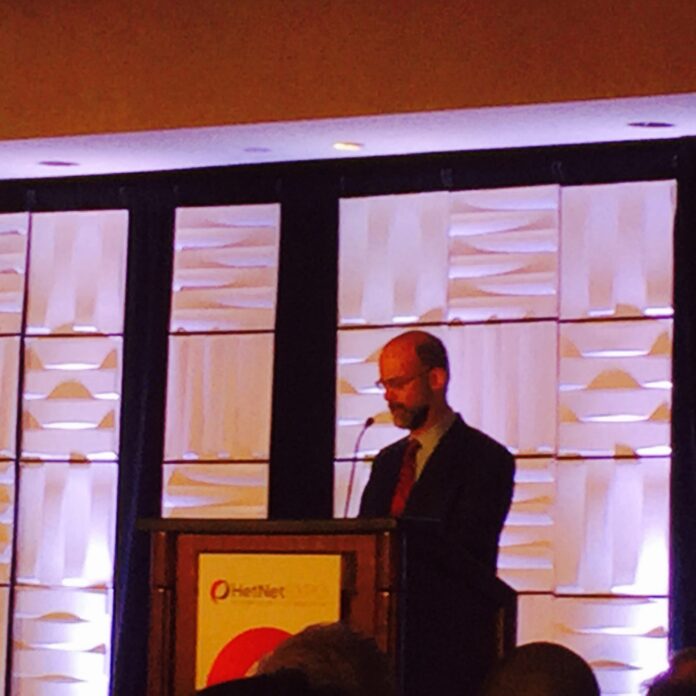PCIA CEO Jonathan Adelstein kicks off HetNet Expo 2015
LOS ANGELES – Former Federal Communications Commissioner Jonathan Adelstein, and current president and CEO of wireless trade association PCIA, kicked off the 2015 HetNet Expo by discussing challenges to small cell and distributed antenna system deployments.
Adelstein got started with a bit of levity with a rare telecom joke: Two antennas met and fell in love. The wedding wasn’t much, but the reception was great.
Moving on. Adelstein said all four major U.S. carriers are going to invest big in densification by way of adding small cells and DAS as part of network improvement strategies. Sprint, for instance, hasn’t confirmed anything, but industry watchers project the carrier will look to deploy more than 50,000 small cells.
Adelstein said small cells and DAS “are an indispensable part of the arsenal for carriers. You see a lot of activity in the marketplace. That indicates people are betting on us for the future.” He called out a recent IGR investment report, which projects that LTE infrastructure investment is estimated at $212 billion over the next five years.
“That figure makes sense when you think about the ‘Internet of Thing,'” Adelstein added. “It’s expected to add more than $1.7 trillion … to the global economy and connect more than 50 million things by 2020. It’s going to be a real demand on the network.”
Adelstein said the biggest challenges to small cell deployments are access to backhaul and navigating municipal concurrency, which shifts from market to market.
“Cost is one of the big issues that’s holding us back,” Adelstein said. “I think we can find a way to make that happen. All the carriers are looking at how to meet their customers’ needs with [heterogeneous networks]. It’s no wonder, of course, considering demand.”

